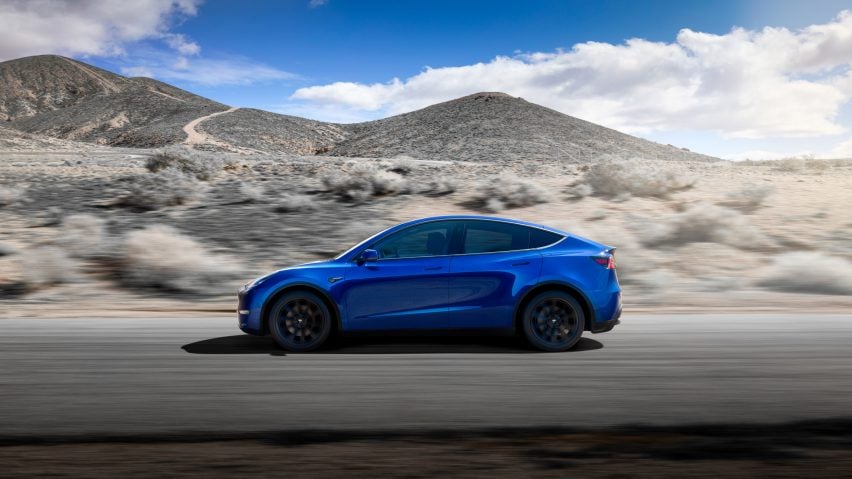
How electric-vehicle technology is changing car design
Cars will start to look dramatically different as electric vehicles become the norm but battery technology must first improve, designers tell Dezeen.
Electric vehicles (EVs) are set to dominate our roads in the coming decades, with many countries intending to ban the sale of new internal combustion engine (ICE) cars by 2035 including the UK, China, Japan and most of Europe, as well as several US states.
Already demand for plug-in cars is surging. The International Energy Agency expects 14 million to be sold worldwide this year, representing 18 per cent of the overall car market – up from just 4 per cent in 2020.
"Skateboard" could lead to more variety
This shift has the potential to deliver a sea-change in the way cars look as automakers race to release electrified models. Fossil-fuel-powered cars depend on a host of engineering components that has literally shaped them: the engine, the fuel tank, the radiator, the transmission, the exhaust pipe, etcetera.
With electric cars all that is generally replaced by what is often referred to as the "skateboard" – a unified, flat floor containing the battery pack and motors.
In theory, this skateboard could be topped by any number of forms that go well beyond conventional car design.
"It is different than the last 100 years where you have a motor, whether front, rear or centre, in a drive shaft and steering column and all these things," explained Giovanny Arroba, design director at Nissan's Global Design Center.
"So there's a lot more variability on how we lay out the people and the storage and the motors on this skateboard platform," he told Dezeen.
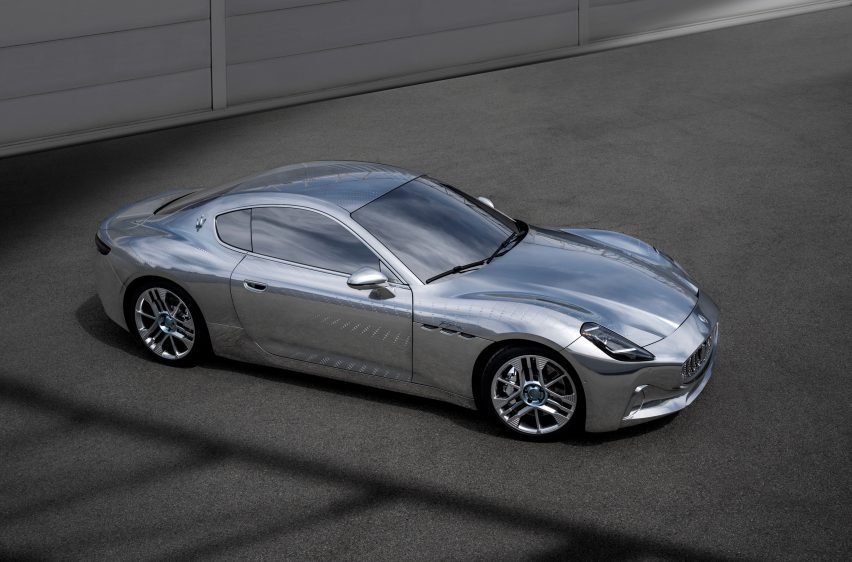
However, many of the electric cars currently hitting the market look highly familiar. Maserati's first electric car, recently launched at Milan design week, is a near-identical-looking electrified version of its GranTurismo.
MINI took the same approach with the Cooper SE, as did Ford with the F-150 Lightning – the EV version of the most popular vehicle in the US.
Similarly, nothing apart from additional streamlining sets the electric Rolls-Royce Spectre markedly apart from the luxury brand's ICE coupes.
Kirsty Dias, managing director at transport-specialising design agency PriestmanGoode, believes this cautious approach to design is a function of manufacturers attempting to encourage the car-driving public to switch to EVs.
"The car industry is not demanding too much of the customer," she told Dezeen. "They're trying to convince people, 'it's the same, so just make the transition because it's better."
"Once there is greater adoption then the next step, I guess, might be to be more experimental with the form."
"Car company chief executives are very conservative people," added University of Bath professor and car industry expert Andrew Graves. "They're quick to say: 'customers won't buy that.'"
Some brands have sought to embrace a new design language as part of their journey to electrification.
An early example was the Nissan Leaf, which was the world's first mainstream all-electric family car when introduced in 2010.
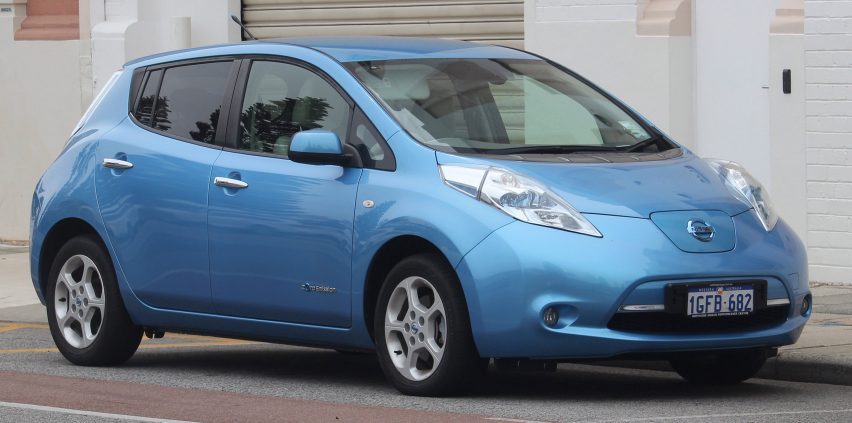
Its bulbous features were much maligned and the model underwent a complete redesign for the 2017 second generation.
"We clearly wanted to make a statement, so they pushed the envelope quite a bit to do something completely new and different, and definitely it was," said Arroba.
"But looking back, maybe it was trying too hard to be different. When we wanted people to adopt electric, it could have been too polarising."
The more recent Ariya, Arroba explained, "was a time to start clean".
"Our philosophy was to reflect the clean power within," he continued. "So it was to go minimal and pure, with clean, powerful forms reflecting the clean, powerful energy."
Sense of "danger" has disappeared
Other carmakers have also sought to make their EVs stand out from their ICE models with stylistic hints at their electron-powered drivetrains.
A good example is Hyundai, whose Ioniq series of electric cars bear distinctive pixelated LED headlights. And like the Ariya, Tesla cars and models from Chinese EV makers like Nio and BYD bear sleek designs.
"As we move forward, you do see that there's quite a few automakers that have gone clean and pure and minimal," remarked Arroba.
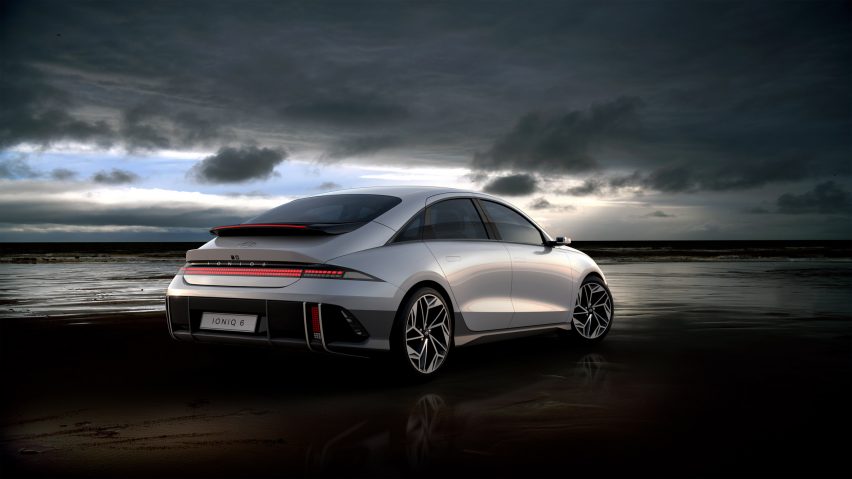
Polestar head of design Maximilian Missoni has a theory to explain the trend.
"The whole idea of combusting fossil fuel and then exhausting a very hot and very dangerous gas makes the car – I wouldn't say a weapon, but it's close," he told Dezeen.
"So that idea of the driver taming the beast was very much reflected in design in the past, and it became part of car culture. It's something that we as designers used very well in translating it into a design language," he continued.
"But now with electrification, that big component of danger in the powertrain itself has disappeared."
Front grilles resembling bared teeth make way for a smoother face, especially since the battery requires much less cooling than an ICE.
Inside, electric car dashboards often light up like spaceships as part of a bid to communicate intelligence rather than aggression.
Meanwhile, the roar of the engine is replaced by carefully synthesised soundscapes – with BMW even procuring the services of Oscar-winning composer Hans Zimmer for the iX.
Beyond just having design similarities to one another, even the more adventurous EVs on the market do not stray far from the appearance of conventional cars.
Part of that is down to safety regulations, which mandate certain features, but aerodynamics is another major factor.
EV battery technology remains fairly rudimentary, meaning the cars' aesthetics are still heavily at the mercy of the wind tunnel.
"Right now we're trying to squeeze as much range out of those battery packs through efficiency of aerodynamics, so you start to see a lot of the cars have a similar silhouette," said Arroba. "What I predict is that you'll see a lot more diversity as the technology progresses."
"What I do see in the future, and I can't wait, is that when battery technology reaches a point where the ranges are just fine and we can scale them down again I think we will see more variety in body styles again, with less focus on aerodynamics," echoed Missoni.
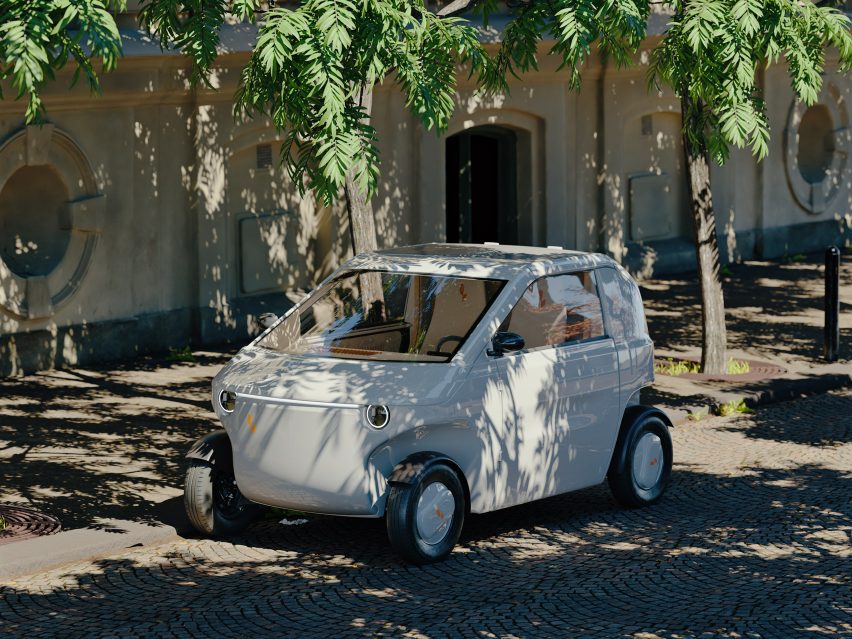
At present, an increasingly large proportion of electric cars are SUVs or SUV crossovers, including the Nissan Aria and the Tesla Model Y (top). Manufacturers claim that high-riders work well with the thick battery skateboards, though Graves has another explanation.
"It's very difficult to make profit from electric cars so they all get to SUVs because they make a shedload of money off them with much smaller volume," he said.
This tendency towards larger models compounds a major issue for EVs: weight. Many of the most popular models clock in at well over two tonnes.
"The batteries rely a lot on large quantities of heavy metals like lithium and cobalt so are incredibly heavy, which is the last thing we need," said Graves.
"Inherited idea" of car design
Heavy cars are popular but have several significant downsides. They are a threat to pedestrians, particularly since electric cars can often go from standing to 100 kilometres per hour in just three seconds.
Bulkiness is also bad for energy and resource efficiency, with the American Council for an Energy-Efficient Economy (ACEEE) ranking the largest EVs as worse for the environment than smaller gas cars.
And it poses problems for infrastructure, causing more damage to road surfaces, while warnings recently surfaced that ageing car parks could collapse under the weight of EVs.
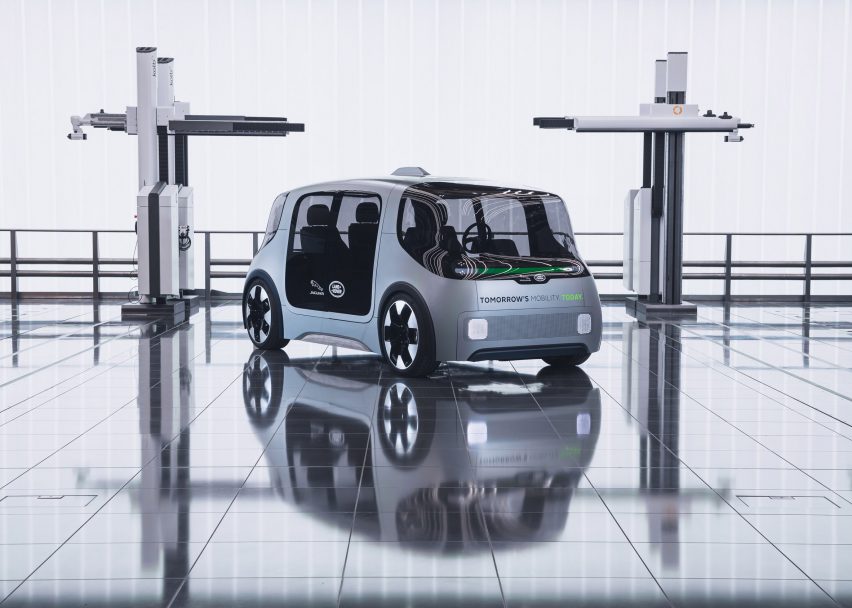
Against that backdrop, some argue that electrification should trigger a complete rethink of the way cars are designed.
Among them is Håkan Lutz, the chief executive of Swedish company Luvly, which this year will launch a mini electric car weighing less than 400 kilograms.
To achieve such lightness, it replaces the skateboard with a tub wrapped in a thermoplastic shell, propelled by a pair of removable 15-kilogram batteries.
"We've inherited an idea of what a car should be," Lutz told Dezeen. "There is no way that we can continue with such wasteful consumption of transport."
"Nowadays, cars transport 1.2 people 36 kilometres within the city – that's what they do. What we've done is just taken this as a fact and built a vehicle that is optimised for that use case," he continued.
In any case, by the time EVs become the norm, another form of technology – artificial intelligence-powered self-driving – could deliver a fundamental revolution of the car.
"When you start to be in that realm, then you can talk more about changing what is possible in the car," said Dias.
PriestmanGoode is working on a project to deliver an autonomous vehicle for Dromos that would operate as part of a fleet on a dedicated, fixed-loop network.
It believes these kinds of systems are not far off, and the boxy appearance of the Dromos car is notably similar to other visions of autonomous cars from Cruise and Jaguar Land Rover.
Meanwhile, car manufacturers frequently predict that driverless cars will become moving entertainment spaces – with Sony signalling a move into the industry.
"Autonomy is going to change the game," said Arroba.
Dezeen in Depth
If you enjoy reading Dezeen's interviews, opinions and features, subscribe to Dezeen In Depth. Sent on the last Friday of each month, this newsletter provides a single place to read about the design and architecture stories behind the headlines.